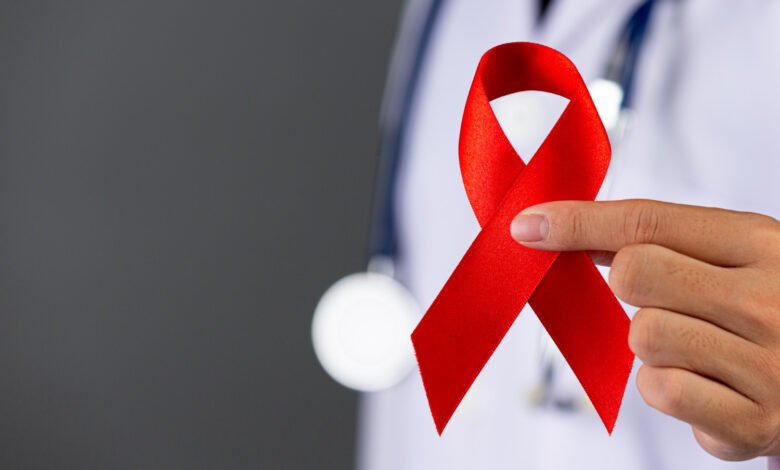The Shocking Truth About HIV and AIDS in 2023

Although significant progress has been made in the treatment and prevention of HIV and AIDS, these diseases continue to pose a major threat to global health in 2023, impacting millions of individuals around the world. The reality is that much work remains to be done to address the HIV and AIDS epidemic and mitigate its devastating effects on communities and individuals worldwide.
HIV, or human immunodeficiency virus, weakens the immune system and can lead to AIDS, or acquired immunodeficiency syndrome, a condition that can be fatal if left untreated. However, with continued education, research, and community engagement, progress can be made in reducing the spread of HIV and improving health outcomes for those living with the virus. In this article, we will explore the shocking truth about HIV and AIDS in 2023, including current statistics, prevention efforts, the impact on communities, and the need for continued research and funding.
Read More: 10 Proven Strategies to Optimize Your Health in 2023
The Current State of HIV and AIDS
HIV, or human immunodeficiency virus, is a virus that attacks the immune system, making it harder for the body to fight off infections and diseases. AIDS, or acquired immune deficiency syndrome, is the most advanced stage of HIV infection. When someone has AIDS, their immune system is severely damaged, making them vulnerable to life-threatening infections and cancers.
According to the World Health Organization (WHO), there were approximately 38 million people living with HIV at the end of 2022. In 2022, there were 1.5 million new HIV infections, and 690,000 people died from AIDS-related illnesses. Sub-Saharan Africa remains the most affected region, with around 67% of all people living with HIV residing in this region.
Despite the progress made in HIV and AIDS treatment, there is still a lot that needs to be done to address the HIV and AIDS epidemic. The stigma surrounding HIV and AIDS continues to be a major barrier to accessing healthcare and support.
The Advances in Treatment

One of the most significant advances in HIV and AIDS treatment is the development of antiretroviral therapy (ART). ART is a combination of drugs that target the virus and slow its replication in the body. ART has been shown to be highly effective in reducing the amount of HIV in the body, improving immune function, and reducing the risk of AIDS-related illnesses and death.
Despite the effectiveness of ART, there are still many challenges to accessing treatment. In many parts of the world, particularly in low- and middle-income countries, access to ART remains limited due to a lack of healthcare infrastructure, high costs, and stigma.
The Role of Prevention

Prevention is an essential part of reducing the spread of HIV and AIDS. There are a variety of methods for HIV and AIDS prevention, including condom use, pre-exposure prophylaxis (PrEP), and needle exchange programs. Education and awareness also play a critical role in prevention efforts, helping to reduce stigma and increase knowledge about HIV and AIDS transmission and treatment.
However, there are still many challenges to HIV and AIDS prevention. The lack of access to healthcare and education in some regions, as well as cultural beliefs and practices, can make it difficult for people to access prevention methods.
The Impact of HIV and AIDS on Communities
HIV and AIDS have a significant impact on communities, both in terms of health and social and economic factors. The burden of HIV and AIDS falls disproportionately on marginalized communities, including men who have sex with men, sex workers, and people who inject drugs.
The impact of HIV and AIDS on families and children is also significant. Children born to HIV-positive parents are at risk of contracting the virus themselves, and many children orphaned due to AIDS-related deaths face challenges accessing education and healthcare.
Community support and engagement are crucial in addressing the impact of HIV and AIDS. Providing support and resources to affected individuals and communities can help reduce stigma and improve health outcomes.
The Need for Continued Research and Funding
Continued research and development are essential in the fight against HIV and AIDS. Advances in treatment and prevention require ongoing investment and research, but funding for HIV and AIDS research can be challenging to secure.
Government and non-governmental organizations play a critical role in funding HIV and AIDS research, but advocacy and community engagement are also essential in raising awareness about the need for continued funding and research.
Conclusion
In conclusion, HIV and AIDS remain a significant global health concern in 2023. While there have been significant advances in treatment and prevention, there is still a lot that needs to be done to address the impact of HIV and AIDS on individuals and communities worldwide.
Continued education and awareness about HIV and AIDS are essential in reducing stigma and improving access to healthcare and prevention methods. Advocacy and community engagement are also essential in raising awareness about the need for continued funding and research in the fight against HIV and AIDS.
Read More: Live Your Best Life Now: Tips to Achieve Your Goals
FAQs
Can HIV be cured?
Currently, there is no cure for HIV. However, antiretroviral therapy can effectively manage the virus and prevent AIDS-related illnesses.
Who is most affected by HIV and AIDS?
HIV and AIDS affect marginalized communities disproportionately, including men who have sex with men, sex workers, and people who inject drugs. Sub-Saharan Africa remains the most affected region, with around 67% of all people living with HIV residing in this region.
How can HIV and AIDS be prevented?
HIV and AIDS can be prevented through methods such as condom use, pre-exposure prophylaxis (PrEP), and needle exchange programs. Education and awareness also play a critical role in prevention efforts.
What is the impact of HIV and AIDS on communities?
HIV and AIDS have a significant impact on communities, both in terms of health and social and economic factors. Marginalized communities are often disproportionately affected, and the impact on families and children can be significant.
How can I support HIV and AIDS research and prevention efforts?
There are many ways to support HIV and AIDS research and prevention efforts, including donating to organizations that support HIV and AIDS research, advocating for increased funding and awareness, and volunteering with community organizations that provide support to affected individuals and communities.







